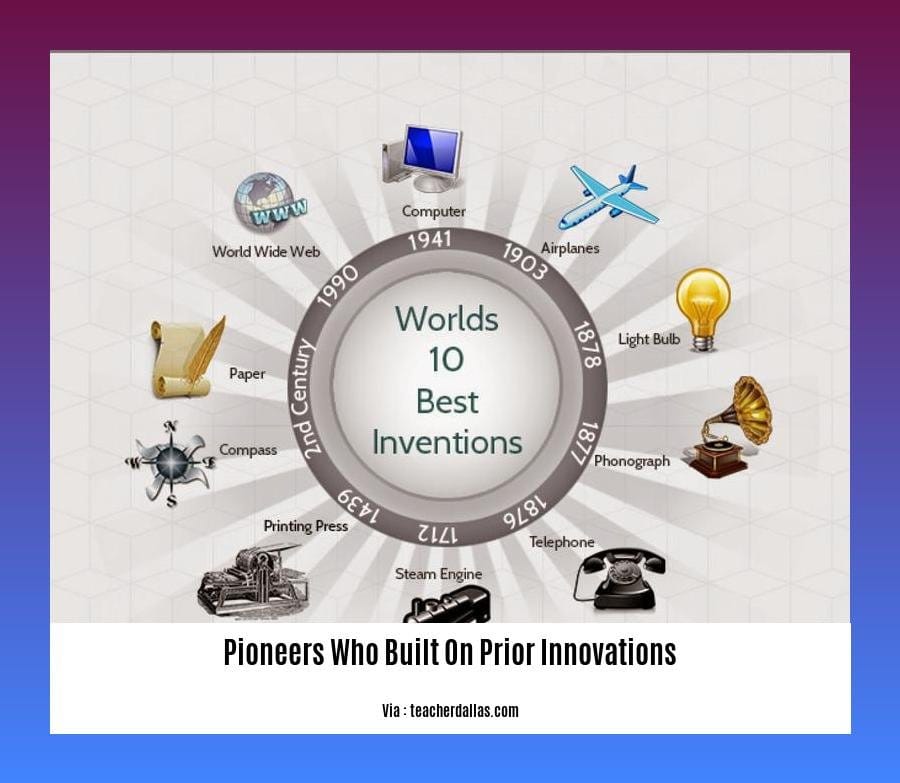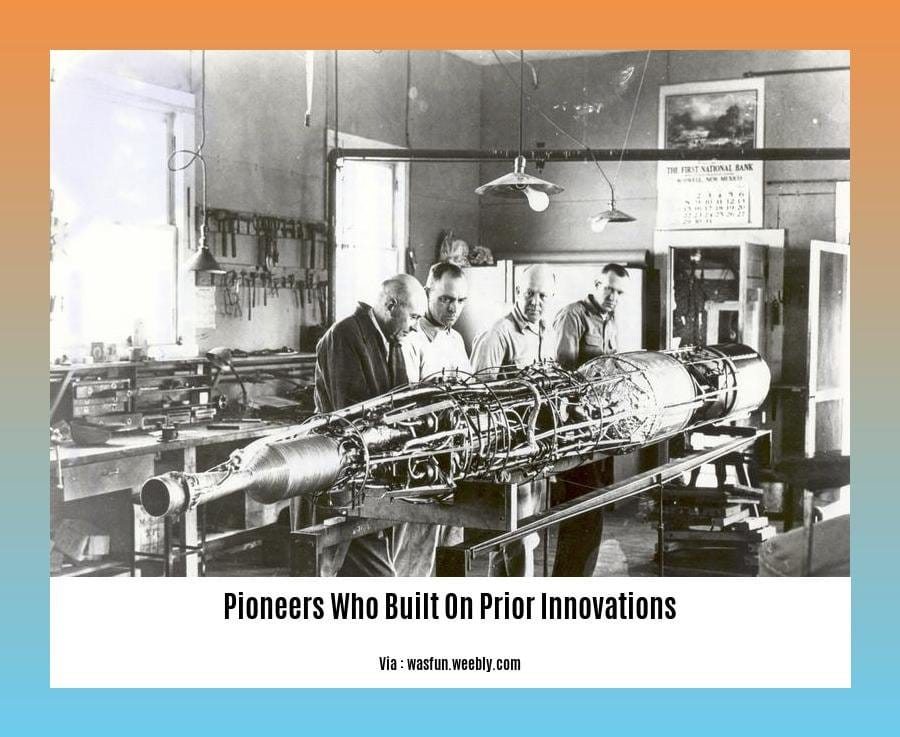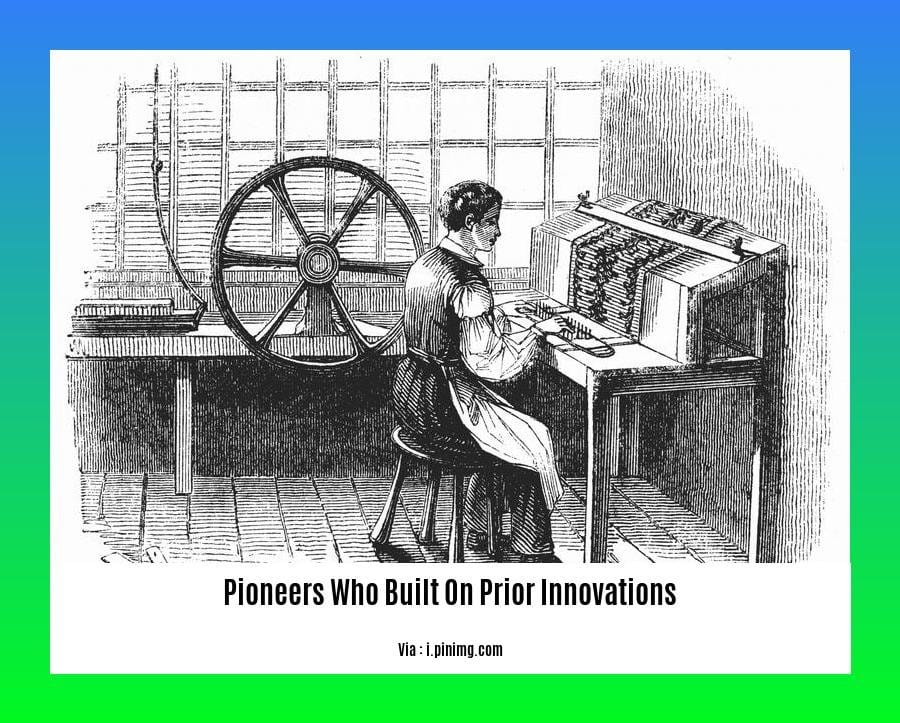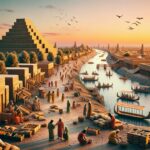Pioneers Who Built on Prior Innovations: Revolutionizing Technology and Shaping Progress Throughout the annals of human civilization, there have been visionaries who have pushed the boundaries of innovation by building upon the foundations laid by their predecessors. These pioneers have revolutionized technology and shaped our understanding of progress, leaving behind an enduring legacy that continues to inspire generations.
Key Takeaways:

- Printing Press: Revolutionized knowledge sharing and education.
- Compass: Facilitated exploration and navigation.
- Electric Light: Improved quality of life and productivity.
- Paper Currency: Enabled large-scale trade and economic growth.
- Steel: Powered the Industrial Revolution and advanced infrastructure.
Pioneers Who Built on Prior Innovations
Pioneers who built on prior innovations are the unsung heroes of progress. They recognized that innovation is a collaborative process, and they were not afraid to stand on the shoulders of giants.
Take Isaac Newton, for example. He is credited with developing the laws of motion and gravity, but he built upon the work of Nicolaus Copernicus, Johannes Kepler and Galileo Galilei, who laid the foundation for understanding the solar system.
Another great example is Marie Curie, the first woman to win a Nobel Prize. She built upon the discovery of radioactivity by Henri Becquerel, isolating and naming the elements polonium and radium. Curie dedicated to uncovering the power of science and her discovery of radium brought about a new era of medical treatment and scientific advancements.
Alexander Graham Bell, the inventor of the telephone, utilized the knowledge of electricity and sound transmission from earlier scientists like Elisha Gray and Antonio Meucci.
Bell further developed their invention and brought the ability to transmit speech over a distance, transforming global communications.
Innovation is not a solo act. It’s a collective effort that builds upon the work of those who came before. By standing on the shoulders of giants, pioneers who built on prior innovations have made their mark on history and continue to shape our world today.
Investigate the remarkable innovators whose steps followed previous pioneers, visionaries who advanced pioneering work, and groundbreaking achievements erected on pioneering foundations. Their contributions shaped the course of history and continue to inspire generations.
Marie Curie built upon the discovery of radioactivity by Henri Becquerel, isolating and naming the elements polonium and radium.
Marie Curie’s groundbreaking work in radioactivity was built upon the pioneering discovery of Henri Becquerel, who stumbled upon the phenomenon in 1896. Intrigued by Becquerel’s findings, Curie delved deeper into the realm of radioactivity, unlocking secrets that would forever shape our understanding of the atomic world.
Through meticulous experimentation, Curie isolated two new elements from uranium ore: polonium and radium. These discoveries were not merely additions to the periodic table; they laid the foundation for groundbreaking applications in medicine, physics, and beyond.
Key Takeaways:
- Henri Becquerel’s discovery of radioactivity paved the way for Curie’s groundbreaking work.
- Curie’s isolation of polonium and radium revolutionized our understanding of the atomic world.
- Radioactivity’s applications in medicine and physics continue to benefit humanity today.
Citation:
- Marie Curie – Facts – NobelPrize.org:
Alexander Graham Bell utilized the knowledge of electricity and sound transmission from earlier scientists, such as Elisha Gray and Antonio Meucci.
Body
The invention of the telephone by Alexander Graham Bell was no solitary endeavor. Bell stood on the shoulders of previous innovators, building upon their advancements in electricity and sound transmission.
Elisha Gray had developed a device capable of transmitting musical tones electrically. Antonio Meucci had devised a rudimentary telephone but lacked the financial resources to patent his invention.
Bell, a keen observer of his predecessors’ work, combined their insights with his own experiments. He recognized the significance of Gray’s understanding of electrical signals and Meucci’s concept of sound transmission.
By incorporating these building blocks, Bell refined and perfected the telephone, transforming it from a theoretical possibility into a practical reality that revolutionized communication.
Key Takeaways:
- Innovation often involves leveraging the work of others.
- Recognizing and building upon prior advancements can accelerate progress.
- Collaboration and exchange of ideas foster innovation.
Citation:
- Alexander & Mabel Bell Legacy Foundation:
Charles Darwin built upon the observations and writings of naturalists such as Georges Cuvier, Jean-Baptiste Lamarck, and Alfred Russel Wallace.
Key Takeaways:
- Pioneers build on prior innovations for advancement.
- Charles Darwin’s theory of evolution by natural selection was influenced by Georges Cuvier, Jean-Baptiste Lamarck, and Alfred Russel Wallace’s work.
- Isaac Newton’s contributions were based on Copernicus, Kepler, and Galileo’s discoveries.
- Thomas Edison drew inspiration from Franklin’s lighting and photography techniques.
- Marie Curie was inspired by Becquerel’s discovery of radioactivity.
- Alexander Graham Bell built on Gray and Meucci’s telephone principles.
Citation:
- Stanford Encyclopedia of Philosophy: Natural Selection

FAQ
Q1: Who were the pioneers who built on the invention of the printing press?
A1: Pioneers like Aldus Manutius, who developed italic type and standardized book sizes, and William Caxton, who introduced the printing press to England, built on Gutenberg’s invention, revolutionizing publishing and education.
Q2: How did the invention of the electric light impact subsequent innovations?
A2: The electric light, pioneered by Humphry Davy, was pivotal in the development of photography, X-rays, and modern lighting systems. It fundamentally altered work and social life, enabling nighttime activities and extending productivity hours.
Q3: What were the consequences of Marie Curie’s discovery of radioactivity?
A3: Curie’s discovery opened the door to advancements in physics, chemistry, and medicine. It led to the development of radiation therapy for cancer, radioactive isotopes for tracing and imaging, and a deeper understanding of atomic structure.
Q4: How did Alexander Graham Bell’s invention of the telephone influence communication?
A4: Bell’s telephone revolutionized global communication, making it possible for people across vast distances to connect instantly. It paved the way for modern telecommunication systems, including mobile phones and the internet.
Q5: What is the significance of Charles Darwin’s theory of natural selection?
A5: Darwin’s theory of natural selection provided a scientific explanation for the diversity and evolution of life on Earth. It challenged traditional beliefs and laid the foundation for modern biology, ecology, and genetics.
- Unveiling Bernhard Caesar Einstein’s Scientific Achievements: A Legacy in Engineering - July 15, 2025
- Uncover who is Jerry McSorley: CEO, Family Man, Business Success Story - July 15, 2025
- Discover Bernhard Caesar Einstein’s Scientific Contributions: Unveiling a Legacy Beyond Einstein - July 15, 2025















